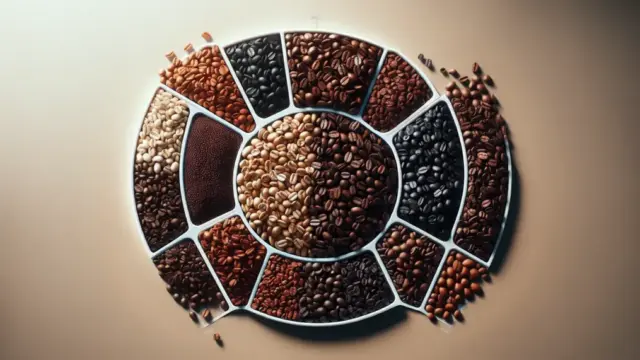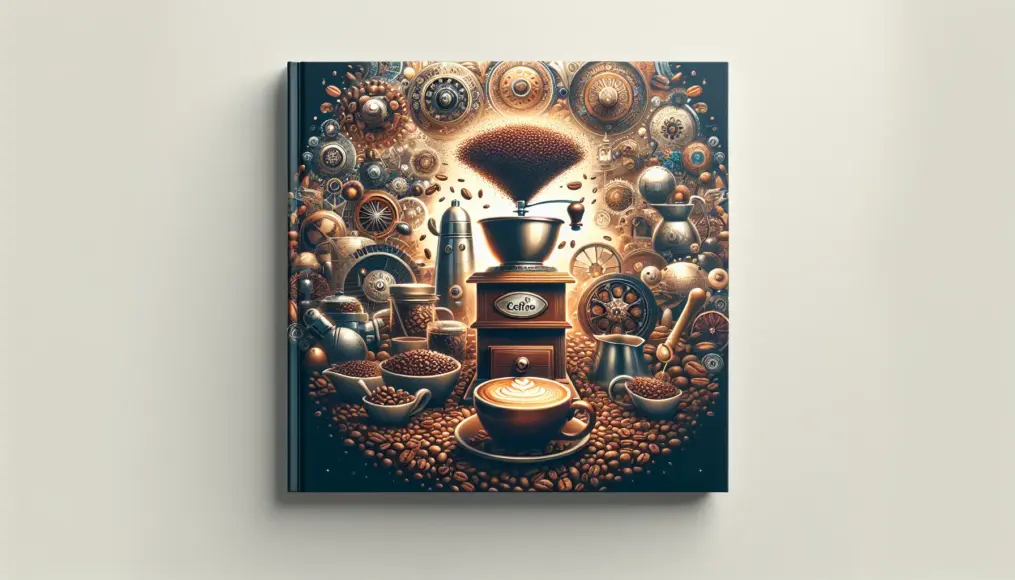One of the most captivating elements of coffee is its bitterness. This characteristic adds depth to the flavor profile and can vary significantly based on the choice of beans, roasting methods, and brewing techniques. In this article, we’ll delve into the nuances of coffee’s bitterness and guide you in discovering how to enjoy it according to your personal taste preferences.
To truly appreciate the bitterness in coffee, it’s essential to understand the basics. The interplay between bean selection, roasting, and brewing plays a crucial role in shaping the flavor. We’ll explore these aspects in detail, inviting you to embark on this flavorful journey with us.
- Understanding the science behind coffee’s bitterness
- The relationship between bean selection and bitterness
- How roasting and brewing methods can adjust bitterness
Understanding the Bitterness of Coffee: A Basic Guide
The bitterness of coffee plays a crucial role in its overall flavor profile. For many, this bitterness is not just a taste sensation but also an element that enhances the coffee’s aroma and complexity. Let’s delve into the science behind bitterness and explore the unique sensations it can evoke.
The Science Behind Bitterness
The bitterness in coffee primarily stems from compounds known as caffeine and chlorogenic acids. These components are a type of polyphenol found in coffee beans, and they are produced during the roasting process. As the roasting progresses, these compounds undergo changes that give rise to the distinct bitterness characteristic of coffee.
Moreover, the flavor of bitterness is significantly influenced by the type of bean, the degree of roasting, and the brewing method used. This means that even with the same bean, variations in roasting and brewing can lead to completely different bitterness levels. This variability is what makes exploring coffee such an enjoyable experience.
- Bitterness in coffee comes mainly from caffeine and chlorogenic acids
- Bitterness compounds change during the roasting process
- The type of bean and the roasting and brewing methods affect bitterness
The Sensations of Bitterness
The bitterness you encounter when sipping coffee impacts not just your taste buds but also your sense of smell and touch. Often, this bitterness is invigorating, providing a refreshing jolt that can help you feel more awake. This sensation is one of the reasons why many people cherish their daily coffee ritual.
Additionally, bitterness can interact with other flavors to create a more complex taste experience. For example, when balanced with sweetness or acidity, the overall flavor profile of coffee becomes more pronounced. This interplay is part of what makes each cup of coffee a new adventure.

If you found this article particularly intriguing, you might also enjoy this piece: “Are You Team Acidic or Team Bitter? The Joy of Coffee Flavor Profiles”. It dives deeper into the differences in coffee bean flavors and the balance between bitterness and acidity, enhancing your coffee appreciation further.
- Bitterness affects both smell and touch
- It creates a refreshing sensation that helps you feel awake
- The balance with other flavors enhances the overall coffee experience
Choosing Coffee Beans and Their Relationship with Bitterness
When it comes to enjoying the bitterness of coffee, selecting the right beans is essential. The type, quality, and roast level of the beans all significantly influence how we perceive bitterness. Let’s explore which beans can help you bring out your preferred bitterness.
Types of Beans That Enhance Bitterness
If you want to experience a strong bitterness in your coffee, it’s important to understand the differences between Arabica and Robusta beans. Arabica beans are known for their rich flavors, with a well-balanced acidity and sweetness, but they tend to have a more subdued bitterness. On the other hand, Robusta beans are higher in caffeine and are characterized by a robust bitterness. Therefore, if you’re looking for a more intense bitter flavor, Robusta or blends containing Robusta are great options.
Additionally, the roast level also affects bitterness. Dark-roasted beans deliver a stronger bitter taste, while light-roasted beans highlight fruity and sweet notes. To find your ideal bitterness, it’s a good idea to experiment with different types of beans.
- Arabica beans offer a balanced acidity and sweetness
- Robusta beans are known for their bold bitterness
- Bitterness varies depending on roast level
Tips for Choosing Beans
When selecting coffee beans, keep a few key points in mind. First, check the origin of the beans. Beans grown in specific regions, like Ethiopia or Colombia, each have their own unique flavors and bitterness profiles. Next, consider the roast level. If you prefer a darker roast, go for beans that have been fully roasted.
Finally, it’s crucial to choose fresh beans when making your purchase. Beans that have been sitting around for a while can lose their flavor, so aim to get the freshest ones possible. By keeping these tips in mind, you can enjoy coffee that highlights your preferred bitterness.
- Check the origin of the beans
- Choose beans according to roast level
- Selecting fresh beans is essential
The Impact of Roasting on Bitterness
Roasting is a crucial process that determines the flavor of coffee, especially its bitterness. Depending on the degree of roasting, the compounds within the beans change, resulting in vastly different taste profiles. In this section, we’ll explore how roasting affects bitterness and discuss the optimal roast levels to bring out your preferred bitterness.
The Roasting Process and Changes in Bitterness
During roasting, coffee beans undergo chemical reactions as they are heated. This process caramelizes the sugars within the beans and produces bitter compounds. Lightly roasted beans tend to highlight acidity and sweetness, with a mild bitterness, while deeper roasts develop a stronger bitter flavor. By adjusting the roast level, you can enjoy bitterness that suits your palate.
Additionally, as roasting time increases, the beans’ surface starts to develop oils, which further intensifies the bitterness. Understanding the roasting process can help you find the perfect coffee that matches your taste.
- Roasting alters the compounds in the beans
- Light roasts are characterized by strong acidity and sweetness, with mild bitterness
- Dark roasts have a more pronounced bitterness and increased surface oils
What’s the Optimal Roast Level?
The ideal roast level varies from person to person, so there’s no one-size-fits-all answer. However, if you want to experience a pronounced bitterness, medium to dark roasts are the way to go. These roast levels offer rich bitterness and a delightful toasty flavor.
On the other hand, if you prefer a lighter, fruitier taste with a touch of acidity, light roasts are a great choice. While the bitterness is subtle, the other flavor notes shine through. Experimenting with different roast levels can help you discover your perfect cup of coffee.
- The optimal roast level depends on individual preferences
- Medium to dark roasts provide rich bitterness
- Light roasts emphasize acidity and fruity notes
Adjusting Bitterness Through Brewing Methods
The bitterness of coffee can vary significantly, not only based on the choice of beans and the roasting process but also through the brewing method used. By adjusting the brewing time and temperature, you can effectively control the strength of bitterness. In this section, we’ll take a closer look at how different brewing methods can influence bitterness.
The Relationship Between Brewing Time and Temperature
Brewing time has a direct impact on the bitterness of coffee. Generally speaking, the longer the brewing time, the stronger the bitterness becomes. However, this can also lead to a loss of acidity and sweetness. The ideal brewing time varies depending on the type of coffee and the brewing method, so it’s essential to experiment with different times to find what suits your taste.
Temperature is another crucial factor. Brewing at high temperatures allows more bitter compounds to dissolve, which gives you a robust bitter flavor. However, if the temperature is too high, you risk over-extracting and producing excessive bitterness, so finding the right temperature is key. Typically, a range of 90 to 95 degrees Celsius (194 to 203 degrees Fahrenheit) is recommended.
- Longer brewing times yield stronger bitterness
- Ideal brewing times vary by coffee type
- Recommended brewing temperature is 90 to 95 degrees Celsius
Recommended Brewing Methods
There are several brewing methods that are great for adjusting bitterness. First up is the French press, which is well-suited for extracting rich bitterness. By using coarsely ground beans and a brewing time of around four minutes, you can enjoy a full-bodied flavor.
Next, espresso allows you to savor a concentrated bitterness in a short amount of time. Brewed under high pressure, it extracts the coffee’s components thoroughly, resulting in a strong bitter taste. If you want to enjoy a balanced bitterness, adding milk can be a delightful option.
Exploring these brewing methods will open up the joy of discovering your preferred bitterness. So, don’t hesitate to try out various techniques and find what you love!
- French press brings out rich bitterness
- Espresso offers a concentrated bitter experience
- The joy of finding your ideal bitterness awaits
Conclusion
The bitterness of coffee is part of its charm, and it can vary significantly based on the choice of beans, roasting, and brewing methods. To truly enjoy that bitterness, start by selecting the right beans, then experiment with roasting levels and brewing techniques. By finding the level of bitterness that suits your taste, you can elevate your coffee experience to new heights.
I hope this article has deepened your understanding of coffee bitterness. As you explore your preferences, enjoy trying out different coffees—you might just make some exciting discoveries.
- The choice of beans is crucial for coffee bitterness
- Roasting levels greatly influence bitterness
- Adjust your brewing method to enjoy a flavor that fits your palate
Be sure to find your favorite coffee and make your daily coffee time even more special. If you found this article helpful, we’d love to hear your thoughts in the comments!










































































Comment